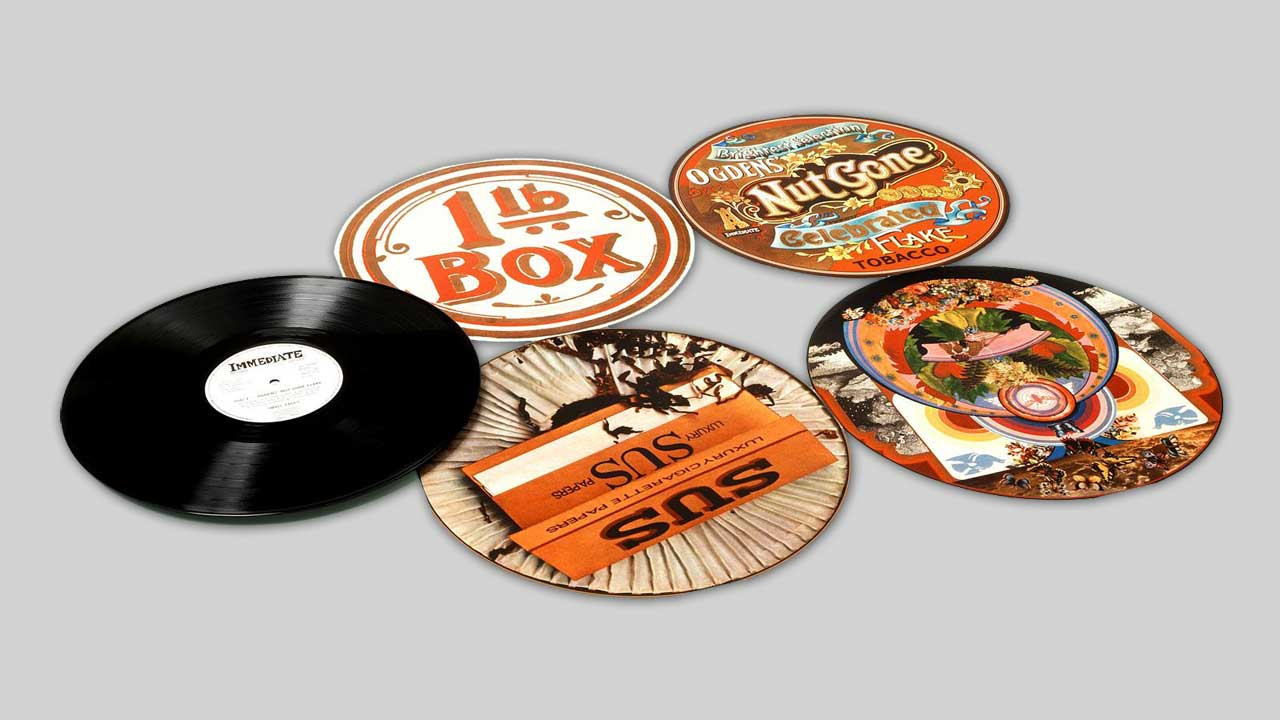A round sleeve for a round record: how The Small Faces' Ogdens' Nut Gone Flake broke the mould and tested the patience of record stores worldwide
A Liverpool tobacco company and plenty of hashish were the inspirations for one of the most iconic album covers of all time

You’d think it was the most obvious idea in the world: a round sleeve for a round record. But until the Small Faces did it with their third album, 1968’s Ogdens’ Nut Gone Flake, no one had thought to do it before.
“It was Ronnie Lane’s idea to do a tobacco tin,” late Small Faces keyboardist Ian McLagan told Classic Rock in 2006. The idea was passed on to Immediate Records’ supremo Andrew Loog Oldham, who got Ogdens [a tobacco company based in Liverpool] to deliver all their original artwork. “When we saw 'Nut Brown Flake' [a variety produced by Ogdens] it was so perfect.”
Taking the notion a step further, Oldham came up with the concept of a round sleeve, knowing it would attract a lot of publicity, while singer Steve Marriott suggested changing the word Brown to Gone – which referred to the group’s hashish intake.
“We were smoking all the time,” McLagan said, “The idea was it would look like we had our own brand of hash: Gone, meaning being out of your head; your nut’s gone!”
The group’s name and label were added to the sleeve, while depictions of the band members replaced those of the kings in the small medallions. Apart from that the artwork remained identical to the original.
For the back cover, McLagan lifted the ‘1lb Box’ design from another tobacco tin, and got his art school buddies and former bandmates Nick Tweddell and Pete Brown to create the psychedelic illustration for the interior artwork, while Gered Mankowitz shot the trippy photographs of the group members behind cellophane. It all unfolded as a five-panel design.
Whether it was down to the uniqueness of the sleeve or not, the album shot to the top of the UK chart. In the US it was a different story, however, and the cover was in no small part responsible for the album’s failure to dent the chart there, as the LP became the bane of shopkeepers and record distributors as attempts were made to protect the package's fragile construction.
Sign up below to get the latest from Classic Rock, plus exclusive special offers, direct to your inbox!
“They cursed us in America,” McLagan explains, “because the record company put the album in a clear bag with a press-stud on the right side, which not only dug into the vinyl but also dug into the next record in the rack. So they were very pissed off, because people kept returning the records.”
Original copies of the album have since become much sought-after collector’s items.
Classic Rock is the online home of the world's best rock'n'roll magazine. We bring you breaking news, exclusive interviews and behind-the-scenes features, as well as unrivalled access to the biggest names in rock music; from Led Zeppelin to Deep Purple, Guns N’ Roses to the Rolling Stones, AC/DC to the Sex Pistols, and everything in between. Our expert writers bring you the very best on established and emerging bands plus everything you need to know about the mightiest new music releases.

